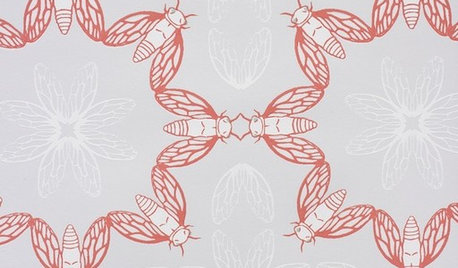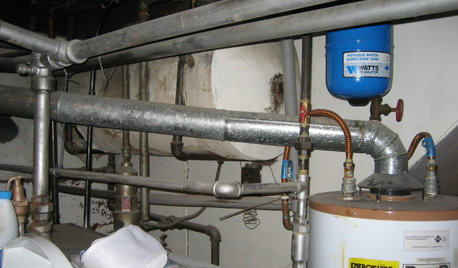Centipedes
bigesox
18 years ago
Related Stories

TROPICAL STYLECast Away for South Seas Style
Oh, to be in Tahiti right now. The next best thing: tips from South Seas resorts to create that lovely getaway feel at home
Full Story
HOUSEPLANTSMeet a Long-Lasting Houseplant With a Forgiving Heart
Low light and little watering won't scar Zee Zee plant for life; this East Africa native has a tolerant nature and an exotic beauty
Full Story
GARDENING GUIDES5 Great Grasses for a New Lawn
Learn about maintenance, wear tolerance, ideal climate and more for these top turf choices to pick the right one for you
Full Story
PRODUCT PICKSGuest Picks: Decor to Make Your Eyes Bug Out
Insects are marching to a different tune these days, showing up on knobs, teapots and even tablecloths
Full Story
REMODELING GUIDES7 Bad Things Your Home May Be Hiding
What you don't know about your home could cost you during a remodel. Here's what to plan for
Full Story
GARDENING AND LANDSCAPING4 Good Ways to Get Rid of Mosquitos in Your Yard
Stay safe from West Nile virus and put an end to irksome itches with these tools and methods for a porch, patio or yard
Full Story
GARDENING GUIDESHow to Pick a Mulch — and Why Your Soil Wants It
There's more to topdressing than shredded wood. Learn about mulch types, costs and design considerations here
Full Story
EDIBLE GARDENSSummer Crops: How to Grow Squash
Almost foolproof and with cheerful flowers, squash comes in a wide range of varieties to plant in spring
Full Story
HOUZZ TOURSHouzz Tour: Victorian's Beauty Is More Than Skin Deep
A London home keeps its historic facade but is otherwise rebuilt to be a model of modern energy-efficiency
Full Story
GARDENING AND LANDSCAPING10 Ways to Open a Kitchen to the Outdoors
Have your cooking and your nice weather too, with a kitchen setup that embraces indoor-outdoor flow
Full Story





Tomato_Worm59
jean001
Related Professionals
Ferndale Landscape Architects & Landscape Designers · River Forest Landscape Architects & Landscape Designers · Allentown Landscape Contractors · El Segundo Landscape Contractors · Florham Park Landscape Contractors · Golden Gate Landscape Contractors · Oviedo Landscape Contractors · Siloam Springs Landscape Contractors · Tewksbury Landscape Contractors · Tustin Landscape Contractors · Uxbridge Landscape Contractors · Manassas Siding & Exteriors · Newington Siding & Exteriors · Round Rock Siding & Exteriors · Wethersfield Siding & Exteriorsworth1
Tomato_Worm59
worth1
one.six_litresoffury